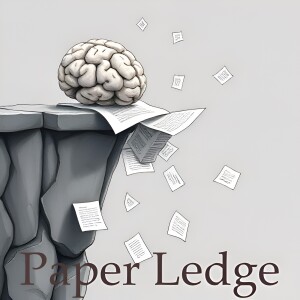
- Podcast Features
-
Monetization
-
Ads Marketplace
Join Ads Marketplace to earn through podcast sponsorships.
-
PodAds
Manage your ads with dynamic ad insertion capability.
-
Apple Podcasts Subscriptions Integration
Monetize with Apple Podcasts Subscriptions via Podbean.
-
Live Streaming
Earn rewards and recurring income from Fan Club membership.
-
Ads Marketplace
- Podbean App
-
Help and Support
-
Help Center
Get the answers and support you need.
-
Podbean Academy
Resources and guides to launch, grow, and monetize podcast.
-
Podbean Blog
Stay updated with the latest podcasting tips and trends.
-
What’s New
Check out our newest and recently released features!
-
Podcasting Smarter
Podcast interviews, best practices, and helpful tips.
-
Help Center
-
Popular Topics
-
How to Start a Podcast
The step-by-step guide to start your own podcast.
-
How to Start a Live Podcast
Create the best live podcast and engage your audience.
-
How to Monetize a Podcast
Tips on making the decision to monetize your podcast.
-
How to Promote Your Podcast
The best ways to get more eyes and ears on your podcast.
-
Podcast Advertising 101
Everything you need to know about podcast advertising.
-
Mobile Podcast Recording Guide
The ultimate guide to recording a podcast on your phone.
-
How to Use Group Recording
Steps to set up and use group recording in the Podbean app.
-
How to Start a Podcast
-
Podcasting
- Podcast Features
-
Monetization
-
Ads Marketplace
Join Ads Marketplace to earn through podcast sponsorships.
-
PodAds
Manage your ads with dynamic ad insertion capability.
-
Apple Podcasts Subscriptions Integration
Monetize with Apple Podcasts Subscriptions via Podbean.
-
Live Streaming
Earn rewards and recurring income from Fan Club membership.
-
Ads Marketplace
- Podbean App
- Advertisers
- Enterprise
- Pricing
-
Resources
-
Help and Support
-
Help Center
Get the answers and support you need.
-
Podbean Academy
Resources and guides to launch, grow, and monetize podcast.
-
Podbean Blog
Stay updated with the latest podcasting tips and trends.
-
What’s New
Check out our newest and recently released features!
-
Podcasting Smarter
Podcast interviews, best practices, and helpful tips.
-
Help Center
-
Popular Topics
-
How to Start a Podcast
The step-by-step guide to start your own podcast.
-
How to Start a Live Podcast
Create the best live podcast and engage your audience.
-
How to Monetize a Podcast
Tips on making the decision to monetize your podcast.
-
How to Promote Your Podcast
The best ways to get more eyes and ears on your podcast.
-
Podcast Advertising 101
Everything you need to know about podcast advertising.
-
Mobile Podcast Recording Guide
The ultimate guide to recording a podcast on your phone.
-
How to Use Group Recording
Steps to set up and use group recording in the Podbean app.
-
How to Start a Podcast
-
Help and Support
- Discover

Computer Vision - Generalized Neighborhood Attention Multi-dimensional Sparse Attention at the Speed of Light
Hey PaperLedge crew, Ernis here, ready to dive into another fascinating research paper! Today, we're tackling something that's super relevant to anyone interested in the future of AI, especially in areas like image and video generation. We're talking about making AI models faster and more efficient using something called sparse attention.
Now, you might be asking, "What exactly is attention in AI?" Think of it like this: when you're reading a sentence, you don't focus equally on every word. Your brain attends more to the important ones. Similarly, in AI, attention mechanisms help the model focus on the most relevant parts of an image or text when making decisions.
The problem is, traditional attention can be incredibly resource-intensive, especially with large images or long texts. It's like comparing every single word to every other word in a novel. That's a lot of comparisons! This leads to what's called O(n^2) complexity, which basically means the computational cost grows exponentially as the input size increases.
That’s where sparse attention comes in. Instead of looking at everything, it strategically focuses on a smaller, more relevant subset. The paper we're looking at today investigates ways to make sparse attention actually faster and more effective. Because, here’s the thing: a lot of previous attempts at sparse attention haven't consistently delivered on their speed promises. They're often too complex, and AI hardware is evolving so quickly that it's hard to keep up.
So, what did the researchers do? First, they introduced something called Generalized Neighborhood Attention (GNA). Think of GNA like different ways of looking at a neighborhood. You could look at your immediate neighbors (like a sliding window), or you could skip a few houses (a strided sliding window), or you could focus on specific blocks within the neighborhood (a blocked attention). GNA is a flexible way to describe these different approaches to focusing on local regions.
Next, they built a simulator to realistically predict how fast these different GNA approaches could potentially be on modern hardware. This simulator is crucial because it takes into account the nitty-gritty details of how AI chips actually work. It helps them understand the upper bound of possible speedups.
But they didn't stop there! They then implemented GNA on top of a super-fast foundation called FMHA, specifically designed for the NVIDIA Blackwell architecture – the latest and greatest in AI chips. The results? Their implementation was able to achieve the theoretically maximum speedup in many cases, reaching an incredible 1.3 petaFLOPs/second using FP16 precision. Imagine a sports car being able to max out its speedometer and actually going the speed that's marked on it!
Here's where it gets really interesting. They plugged their GNA configurations into existing, cutting-edge AI models like Cosmos-7B, HunyuanVideo, and FLUX – all used for generating images and videos. And guess what? They saw end-to-end speedups of 28% to 46% on B200 chips without any fine-tuning! That’s like getting a significant performance boost on your computer just by swapping out a single component, without having to reinstall everything.
"Our implementation can fully realize the maximum speedup theoretically possible in many perfectly block-sparse cases, and achieves an effective utilization of 1.3 petaFLOPs/second in FP16."The best part? They're open-sourcing their simulator and Blackwell kernels through the NATTEN project. This means anyone can use and build upon their work!
So, why does this research matter? Well, for:
- AI Researchers: This provides a practical, high-performance implementation of sparse attention and a valuable simulation tool.
- AI Engineers: This offers a way to speed up existing models without extensive retraining.
- Anyone Interested in AI: This shows how clever algorithmic improvements combined with optimized hardware can lead to significant performance gains, making AI more accessible and efficient.
This research is about pushing the boundaries of what's possible with AI, making it faster, more efficient, and ultimately, more useful for everyone. It's a great example of how understanding the underlying hardware and designing algorithms that take advantage of it can lead to big breakthroughs.
Here are a few questions this paper brought up for me:
- How might these sparse attention techniques impact the development of even larger and more complex AI models in the future?
- What are the potential limitations of GNA, and what other types of sparse attention mechanisms might be worth exploring?
- Could these speedups translate to lower energy consumption, making AI more sustainable?
That's all for today's deep dive, PaperLedge crew! I'm really interested to hear what you think about this paper. Let me know your thoughts and questions in the comments. Until next time, keep learning!
Credit to Paper authors: Ali Hassani, Fengzhe Zhou, Aditya Kane, Jiannan Huang, Chieh-Yun Chen, Min Shi, Steven Walton, Markus Hoehnerbach, Vijay Thakkar, Michael Isaev, Qinsheng Zhang, Bing Xu, Haicheng Wu, Wen-mei Hwu, Ming-Yu Liu, Humphrey Shi
More Episodes
Create your
podcast in
minutes
- Full-featured podcast site
- Unlimited storage and bandwidth
- Comprehensive podcast stats
- Distribute to Apple Podcasts, Spotify, and more
- Make money with your podcast
It is Free
- Privacy Policy
- Cookie Policy
- Terms of Use
- Consent Preferences
- Copyright © 2015-2025 Podbean.com





